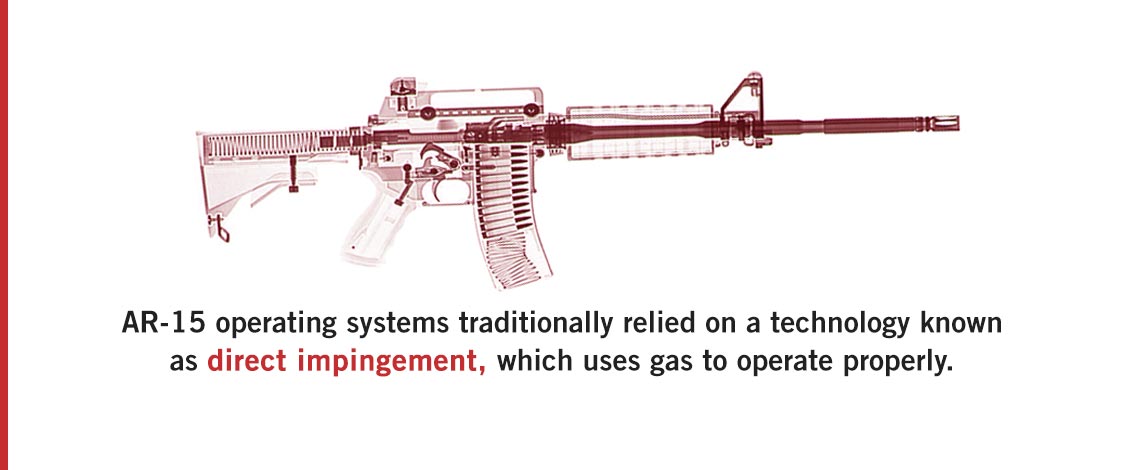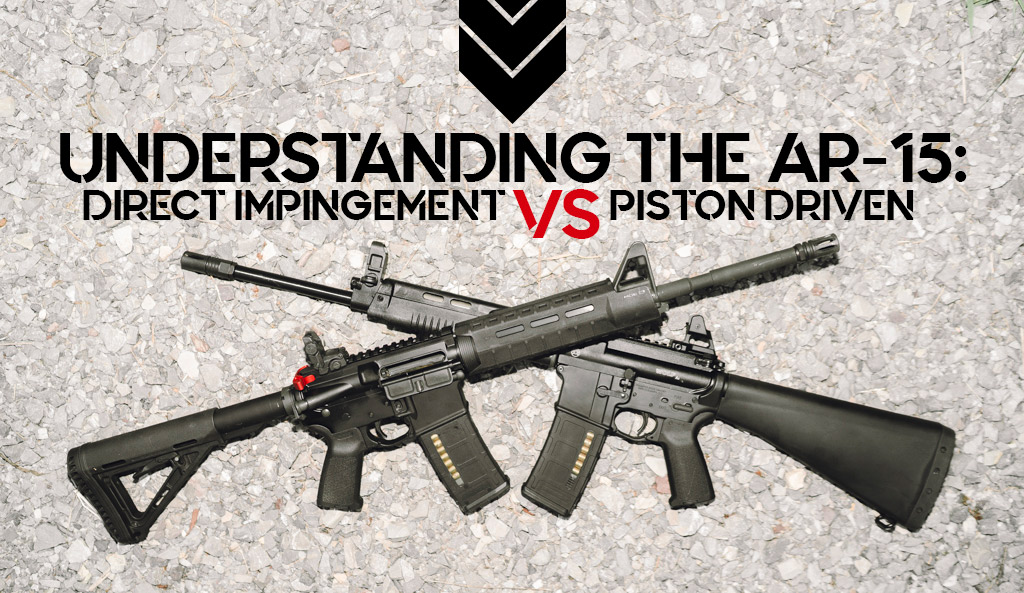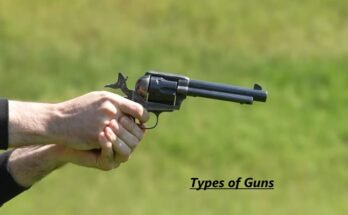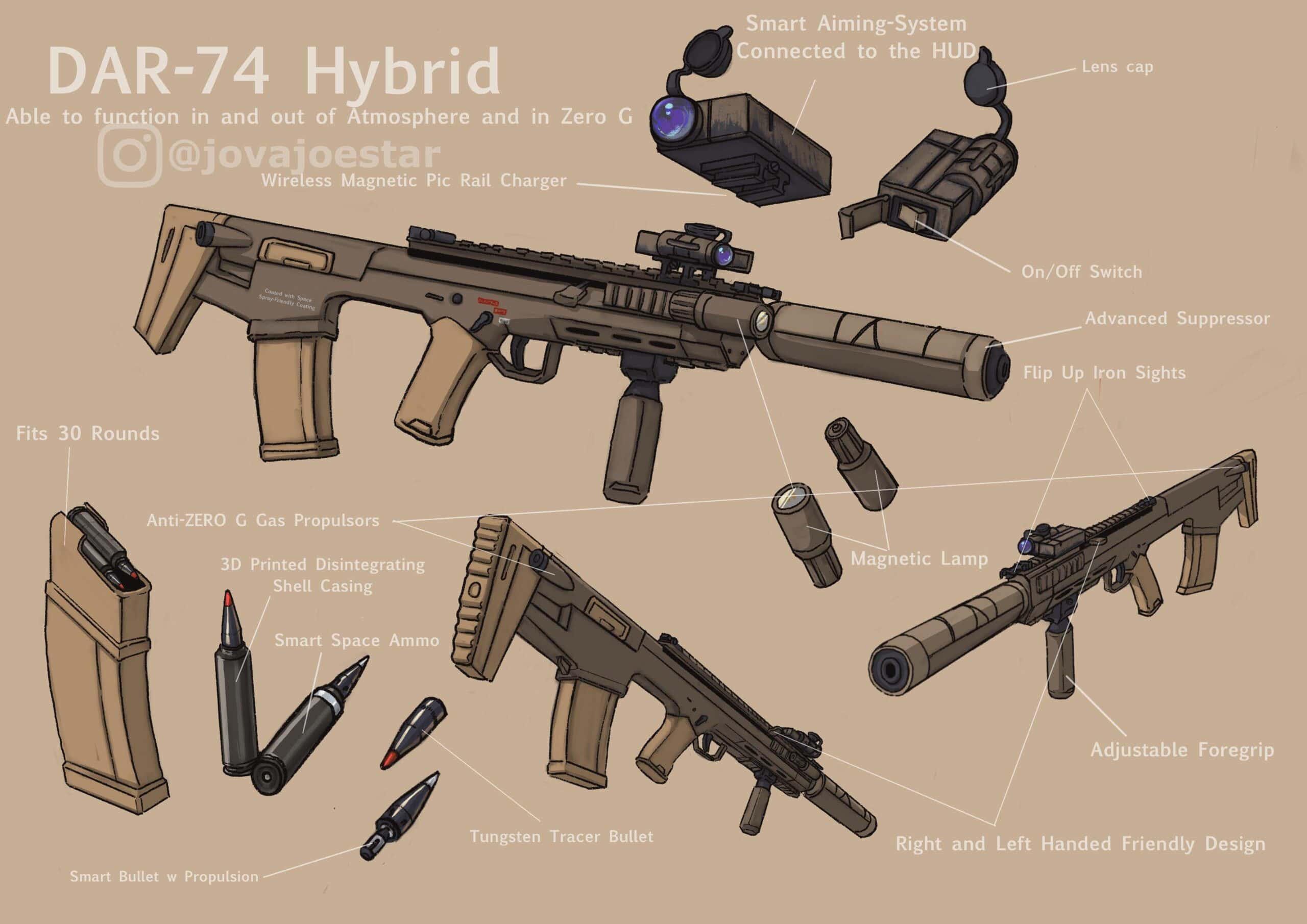Direct impingement uses gas directly to cycle the action, while piston-driven systems use a piston to drive the bolt. Both methods have unique advantages and disadvantages.
Direct impingement and piston-driven AR-15s are two popular operating systems. Direct impingement, often abbreviated as DI, channels gas from the fired cartridge directly into the bolt carrier group. This method is known for its simplicity and lighter weight, resulting in a slightly lighter rifle.
Piston-driven systems, on the other hand, use a piston to drive the bolt carrier group. This system is praised for its reliability and cleaner operation, as it keeps gas and carbon buildup out of the bolt carrier group. Each system has its own set of benefits, making the choice dependent on the user’s preferences and intended use.
Introduction To Ar-15 Systems
The AR-15 is a popular rifle among enthusiasts. There are two main systems in AR-15 rifles: Direct Impingement (DI) and Piston-Driven. Each system has unique features and benefits.
History Of Ar-15
The AR-15 was created by Eugene Stoner in the 1950s. It was first used by the U.S. military. The original design used the Direct Impingement system.
Over time, the Piston-Driven system was developed. This was to solve some issues with the DI system. The Piston-Driven system became an alternative to the original design.
Popularity And Usage
The AR-15 is popular with both civilians and military. Its versatility and customization options make it a favorite. The rifle is used for hunting, sport shooting, and self-defense.
Many prefer the DI system for its simplicity and accuracy. Others choose the Piston-Driven system for its reliability in harsh conditions. Each system has a strong user base with specific needs.
| Feature | Direct Impingement | Piston-Driven |
|---|---|---|
| Operating Mechanism | Gas directly moves the bolt. | Gas moves a piston to move the bolt. |
| Maintenance | Requires more cleaning. | Less frequent cleaning needed. |
| Weight | Lighter | Heavier |
| Cost | Usually cheaper | Often more expensive |
Direct Impingement System
The Direct Impingement System is a popular choice for AR-15 enthusiasts. This system offers a unique way of cycling the firearm. It is known for its simplicity and effectiveness.
How It Works
The direct impingement system operates by using gas pressure. When a bullet is fired, gas is siphoned from the barrel. This gas travels through a tube directly to the bolt carrier. The gas then forces the bolt carrier to move, ejecting the spent cartridge. This process also chambers a new round, readying the firearm for the next shot.
Advantages
- Simplicity: The system has fewer parts, reducing complexity.
- Weight: Direct impingement systems are generally lighter.
- Accuracy: The design can offer better accuracy due to less moving mass.
- Cost: Often, direct impingement rifles are more affordable.
Disadvantages
- Heat: The system can get very hot during rapid fire.
- Maintenance: More frequent cleaning is required to maintain reliability.
- Wear: Increased wear on parts due to direct gas impact.
Piston-driven System
The piston-driven system in AR-15 rifles offers a different approach. This system uses a piston to cycle the rifle. It differs from the direct impingement system, which relies on gas. Let’s dive into the specifics of the piston-driven system.
Mechanism Explained
The piston-driven AR-15 uses a piston and an operating rod. When you fire the rifle, gas from the fired cartridge pushes the piston. The piston then moves the operating rod. This rod cycles the bolt carrier group. This process is different from direct impingement. In direct impingement, gas directly drives the bolt carrier group.
Benefits
- Cleaner Operation: The piston-driven system keeps gas and carbon away from the bolt.
- Less Heat: The heat stays away from the receiver, reducing wear.
- Reliability: Piston-driven AR-15s are often more reliable in adverse conditions.
Drawbacks
- Cost: Piston-driven AR-15s are generally more expensive.
- Weight: These rifles can be heavier due to added components.
- Complexity: The system has more parts, which can complicate maintenance.

Credit: www.silencercentral.com
Performance Comparison
The AR-15 rifle is popular among gun enthusiasts. It has two main operating systems: Direct Impingement and Piston-Driven. Each system impacts performance differently. This section explores the performance comparison between these two systems.
Accuracy
Direct Impingement systems often offer better accuracy. The system has fewer moving parts. This results in less disruption during firing. The barrel stays in line, improving shot precision.
Piston-Driven systems can affect accuracy. The piston adds extra weight and movement. This can slightly shift the barrel alignment. Some shooters notice a small decrease in shot precision.
Reliability
Piston-Driven systems are known for their reliability. They perform well in harsh conditions. The piston system keeps gases away from the bolt. This reduces fouling and the need for frequent cleaning.
Direct Impingement systems can be less reliable in dirty environments. Gases are directed into the bolt carrier group. This leads to more fouling and maintenance. Frequent cleaning is required to ensure proper function.
| Feature | Direct Impingement | Piston-Driven |
|---|---|---|
| Accuracy | High | Moderate |
| Reliability | Moderate | High |
Maintenance And Cleaning
Maintaining and cleaning your AR-15 is crucial. It ensures your firearm’s performance and longevity. Knowing the differences in maintenance between Direct Impingement and Piston-Driven AR-15s can help you choose the right system for you.
Direct Impingement Maintenance
Direct Impingement (DI) AR-15s use gas from the fired cartridge. This gas directly cycles the action. It keeps the rifle lightweight and simple. But it also means more cleaning.
- Frequent Cleaning: DI systems need frequent cleaning. Carbon buildup occurs in the bolt carrier group.
- Detailed Scrubbing: Each part must be scrubbed thoroughly. Pay special attention to the gas key and bolt.
- Lubrication: After cleaning, lubricate all moving parts. This reduces wear and tear.
Piston-driven Maintenance
Piston-Driven AR-15s use a piston to cycle the action. This keeps gas and carbon out of the receiver. It makes cleaning easier but adds weight and complexity.
- Less Frequent Cleaning: Piston systems need less frequent cleaning. The action stays cleaner.
- Check the Piston: The piston system itself needs checking. Ensure it is free of debris and properly lubricated.
- Fewer Parts to Clean: The bolt carrier group stays cleaner. This reduces the number of parts to clean.
| Aspect | Direct Impingement | Piston-Driven |
|---|---|---|
| Cleaning Frequency | Frequent | Less Frequent |
| Complexity | Simple | More Complex |
| Weight | Lighter | Heavier |
| Carbon Buildup | High | Low |

Credit: www.wingtactical.com
Cost Implications
Deciding between a Direct Impingement (DI) and a Piston-Driven AR-15 involves understanding cost implications. Both systems have distinct financial considerations. Let’s explore the cost factors in detail.
Initial Investment
The initial cost is a key factor for many buyers. Direct Impingement AR-15s typically have a lower initial price. This makes them attractive for budget-conscious buyers.
Piston-Driven AR-15s usually come at a higher price point. This is due to their more complex design and parts. The added cost often reflects the engineering and materials used.
| Type | Average Cost |
|---|---|
| Direct Impingement AR-15 | $600 – $1,200 |
| Piston-Driven AR-15 | $1,000 – $2,500 |
Long-term Costs
Long-term costs include maintenance, parts replacement, and ammunition. Direct Impingement systems may require more frequent cleaning and parts replacement. This can add up over time.
Piston-Driven systems tend to have fewer maintenance needs. They often run cleaner, which can reduce wear and tear. This can save money on replacement parts and cleaning supplies.
Consider the following factors for long-term costs:
- Frequency of Cleaning
- Cost of Replacement Parts
- Durability of Components
Choosing between DI and Piston-Driven AR-15s involves weighing initial versus long-term costs. Each system has its own financial benefits and drawbacks.
User Preferences
The AR-15 platform is versatile and customizable. Two popular systems are Direct Impingement (DI) and Piston-Driven. User preferences vary based on specific needs. Understanding these preferences helps in choosing the right system.
Military And Law Enforcement
Military and law enforcement users often prioritize reliability and durability. In this context, the piston-driven AR-15s are favored due to their ability to stay cleaner during extended use. This system prevents carbon buildup in the receiver, ensuring consistent performance.
In contrast, the direct impingement system is lighter and has fewer moving parts. Some users appreciate the simplicity and accuracy it offers. However, it requires more frequent cleaning to maintain reliability.
| Feature | Direct Impingement | Piston-Driven |
|---|---|---|
| Reliability | Moderate | High |
| Maintenance | Frequent | Less Frequent |
| Weight | Lighter | Heavier |
Civilian Use
Civilian users often look for versatility and ease of use. For them, the direct impingement system offers a balance of performance and ease of maintenance. It is lighter and generally more affordable, making it a popular choice.
On the other hand, some civilians prefer the piston-driven system for its reduced maintenance and enhanced reliability. This system is particularly appealing to those who engage in extensive shooting sessions or live in environments where dirt and debris are common.
- Cost: Direct Impingement is usually cheaper.
- Maintenance: Piston-Driven requires less frequent cleaning.
- Weight: Direct Impingement is lighter.
In conclusion, user preferences for AR-15 systems depend largely on specific needs. Military and law enforcement prioritize reliability, while civilians may focus on versatility and ease of use.

Credit: www.wideners.com
Making The Right Choice
Choosing between a Direct Impingement (DI) and a Piston-Driven AR-15 can be challenging. Each system offers unique advantages. The right choice depends on your needs and preferences. This section will guide you through the key considerations.
Key Considerations
Here are the main factors to consider:
- Maintenance: DI systems are simpler but get dirtier. Piston-driven systems stay cleaner but have more parts.
- Weight: DI rifles are usually lighter. Piston systems add weight due to extra components.
- Accuracy: DI systems generally offer better accuracy. Piston systems can affect barrel harmonics.
- Cost: DI rifles are typically more affordable. Piston-driven rifles often come at a higher price point.
- Reliability: Piston systems are more reliable in adverse conditions. DI systems can be less reliable in dirty environments.
| Factor | Direct Impingement | Piston-Driven |
|---|---|---|
| Maintenance | More frequent cleaning needed | Stays cleaner, more parts |
| Weight | Lighter | Heavier |
| Accuracy | Generally better | Can affect barrel harmonics |
| Cost | More affordable | Higher price point |
| Reliability | Less reliable in dirt | More reliable in adverse conditions |
Final Thoughts
Both DI and piston-driven AR-15s have their strengths. Your choice should reflect your specific needs and preferences. If you prioritize ease of maintenance, a piston-driven system might be better. If you prefer lightweight and accuracy, a DI system could be the way to go. Consider your budget, maintenance routine, and operating conditions. Choose the system that aligns best with your requirements.
Frequently Asked Questions
What Is Direct Impingement In Ar-15s?
Direct Impingement uses gas from the fired cartridge to cycle the action. This system is simpler and lighter. It directs gas directly into the bolt carrier, causing it to cycle.
How Does A Piston-driven Ar-15 Work?
A Piston-Driven AR-15 uses a piston to cycle the action. The piston moves the bolt carrier without directing gas into it. This system is cleaner but heavier.
Which Ar-15 System Is More Reliable?
Piston-Driven AR-15s are generally more reliable. They run cleaner since gas isn’t directed into the bolt carrier. However, Direct Impingement systems are simpler and require less maintenance.
Is Direct Impingement Lighter Than Piston-driven?
Yes, Direct Impingement systems are usually lighter. They have fewer parts and less complexity, making the rifle lighter and easier to handle.
Conclusion
Choosing between direct impingement and piston-driven AR-15s depends on your needs. Direct impingement offers simplicity and cost-efficiency. Piston-driven systems provide better reliability and cleaner operation. Both have their advantages. Consider your priorities and usage to make the best choice for your AR-15.


